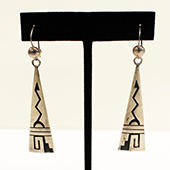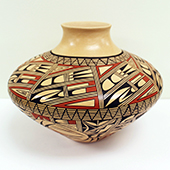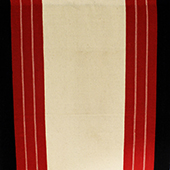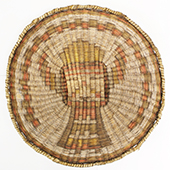Kachinas
Kachina dolls or figures are the physical representation of Hopi spirits and part of a belief system that dates back to the 1200s. There are upwards of 500 different spirits, each with its own separate look, accessories, and attributes. They represent everything from animals and nature to abstract concepts.
The Hopi call a single spirit or figure katsina,and the word katsinam is the plural. The name kachina is the result of translation errors.
Katsina spirits provide for, protect, teach, and instruct humankind. The Hopi believe that they visit the mesas from January to July to bless the people with rain, abundant crops, fertility, good health, knowledge, and other gifts. When they are not visiting, the Hopi believe Katsina spirits reside at the sacred place called Nuvatukaua’ovi, the San Francisco Peaks.
Hopi people who participate in sacred ceremonies of the Katsina religion are called Katsinam dancers. Traditionally, only Hopi men who were initiated in the religion and were Katsinam dancers made katsina figures. Hopi carvers created both flat and three-dimensional katsina figures. Each katsina figure was carved by hand from a single piece of cottonwood root, then meticulously painted and decorated. Today, katsina carving is still primarily the domain of Hopi men, and the best carvers use traditional methods.
Katsina figures were, and still are, given to young Hopi girls as gifts. The Hopi believe these figures will bring girls happiness, wealth, and health in the future. They are also used as educational tools to teach girls about Hopi beliefs.
Katsina figures that are made to be sold are called katsintihu (singular) and katsintithu (plural). Although katsintithu represent a sacred belief system, high demand prompts their reproduction for profit. Katsina figures carved today are not only a bridge between the spiritual world and mortals, but also between the Hopi and non-Hopi.
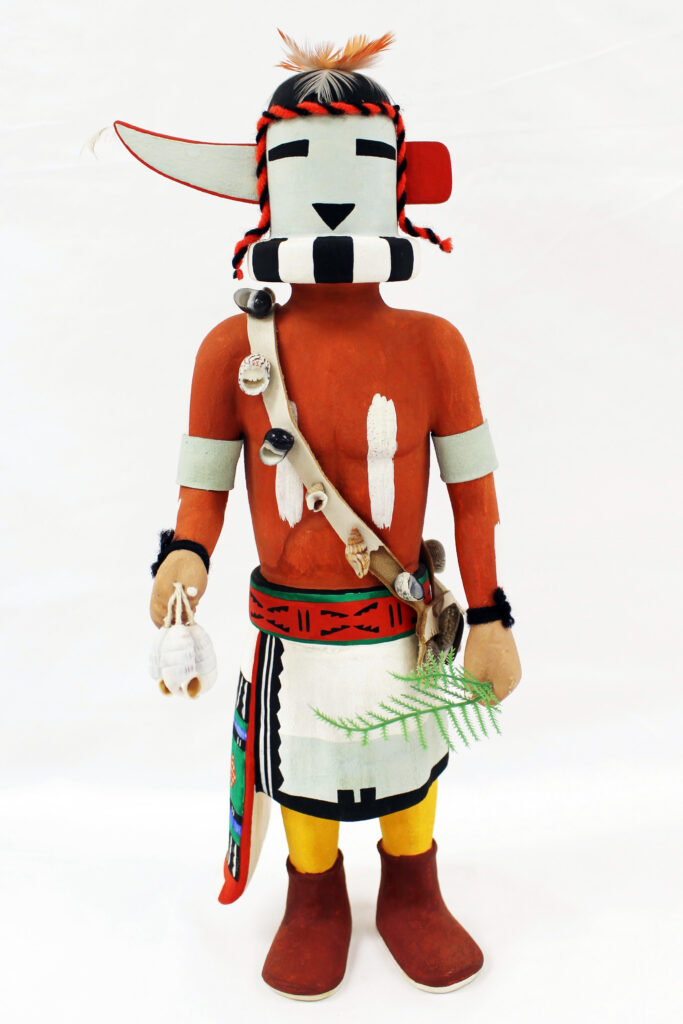
Zuni Rain Priest of the North
Walter Howato (1921-2003)
2012.11.E.5
Called Sai-astasana by the Hopi. This figure was adopted from the Zuni people. He is known as the Chief Father of all Katsinam. He controls the weather and the longevity of a Hopi life. This figure has a small right eye so that the lives of evil witches will be short. A long left eye gives a person long life.
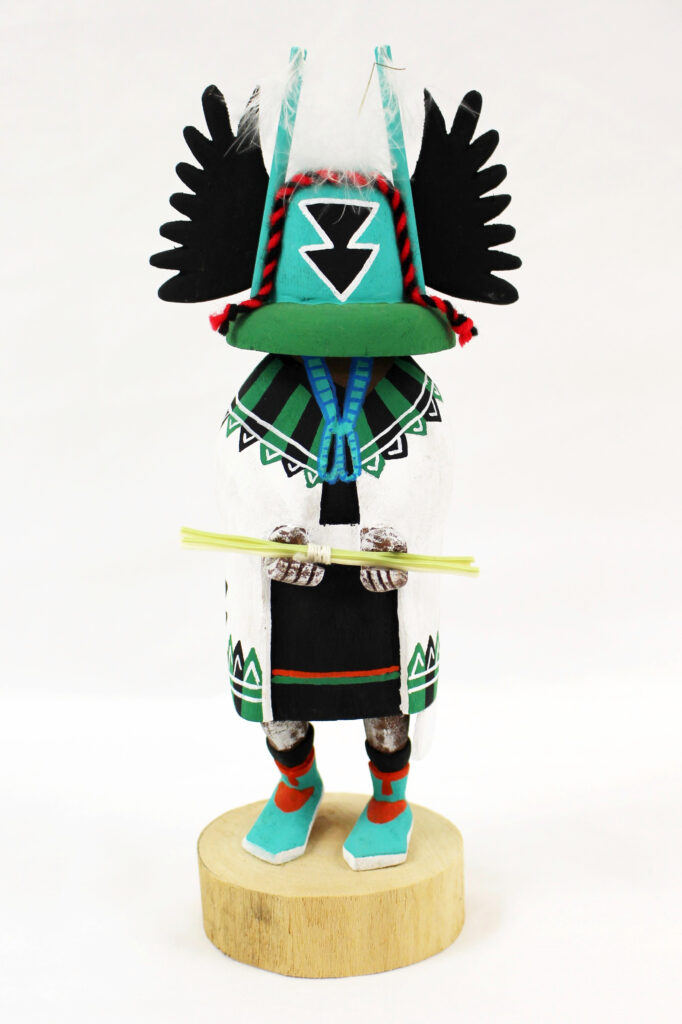
Crow Mother
Art. Yowytewa
1994.01.E.13
Called Tumas by the Hopi. She is believed to be the mother of all Katsinam. She either carries a basket of corn and bean sprouts or sometimes yucca. She acts as a guardian of Hopi children and supervises their initiation ceremonies. This figure represents the germination of seeds during winter, so the Hopi will have crops to plant in spring.
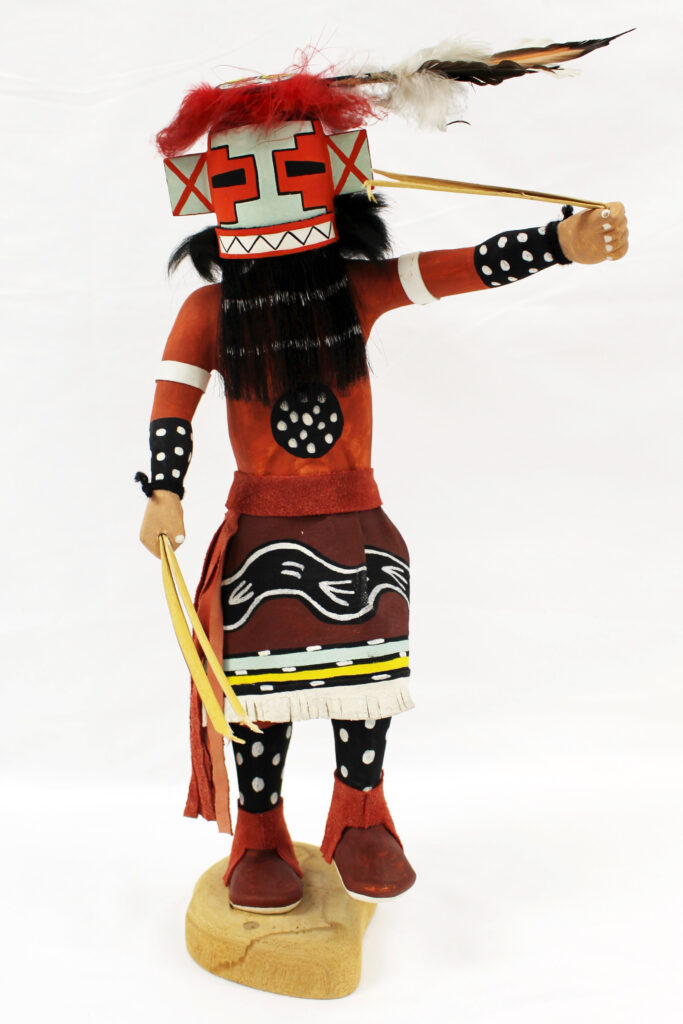
Guard
Walter Howato (1921-2003)
2012.11.E.4
Called Hilili by the Hopi. This figure was adopted from the Acoma or Laguna people. He holds yucca whips. During ceremonies he enforces order, prevents interruptions, protects other Katsinam, and punishes misbehaving clowns. His name comes from the call he makes.
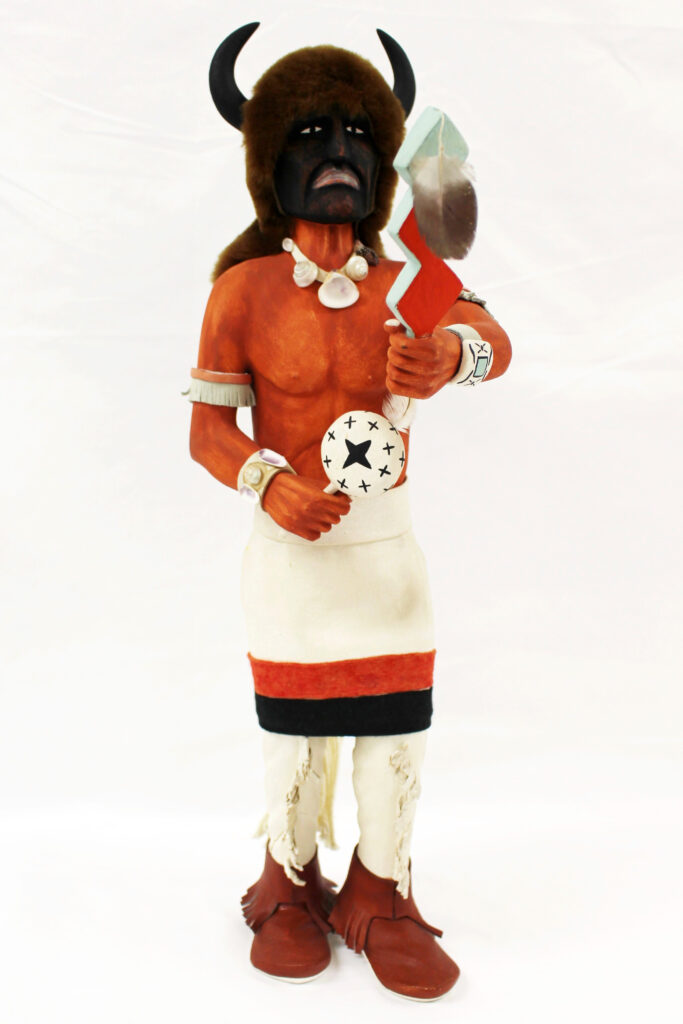
Black Buffalo
Walter Howato (1921-2003)
2012.11.E.7
Called Mosairu by the Hopi. There are different types of Buffalo figures. On Second Mesa, the Buffalo figure has a black face with horns on top of his head. He helps the Hopi kill evil thoughts and acts as a spiritual protector. The Black Buffalo figure reminds the Hopi to pray for the buffalo herds to increase.
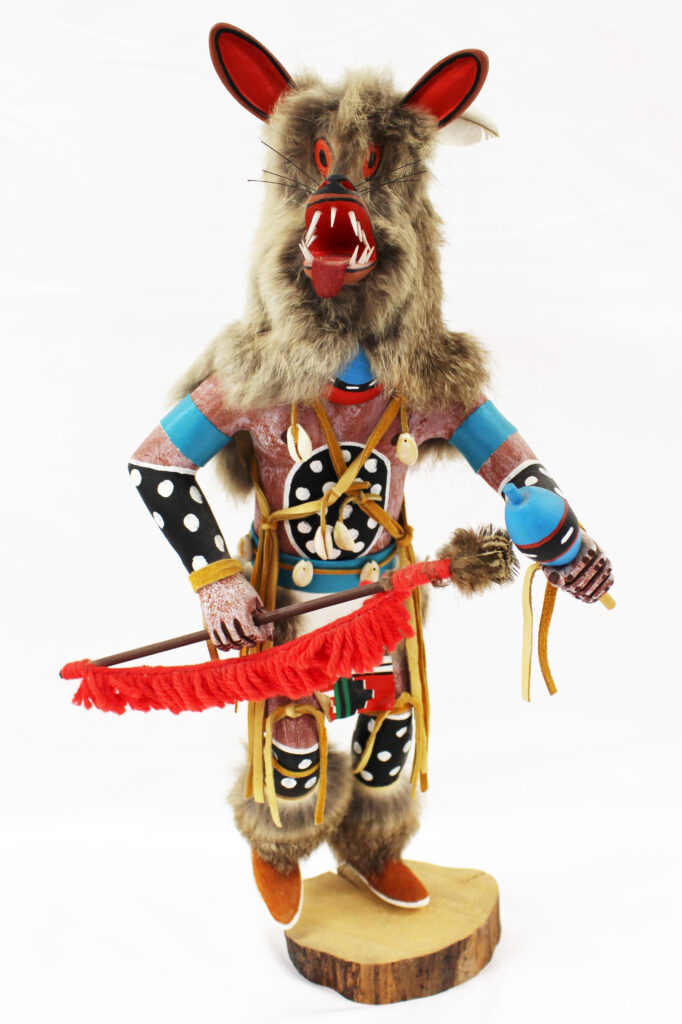
Wolf
Dave Nelson
On loan from Mr. Frank Warfield
Called Kweo by the Hopi. The wolf is respected for its ability to hunt, survive, and thrive, even under difficult conditions. The Wolf figure represents resourcefulness, courage, and being a pathfinder. It reminds the Hopi that these qualities are needed for survival.
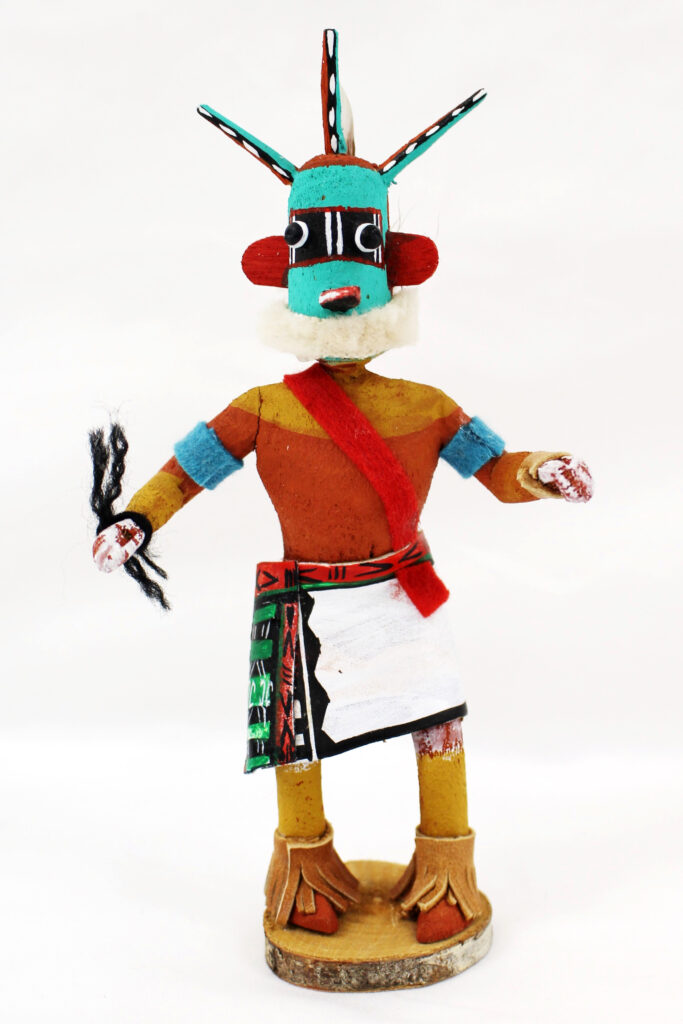
Three Horned
E. Jackson
On loan from Mr. Frank Warfield
Called Payik’ala by the Hopi. This figure was adopted from the Zuni people in the twentieth century. He is a warrior that guards other Katsinam while dancing furiously. This figure represents rhythmic sounds, swiftness, and action.
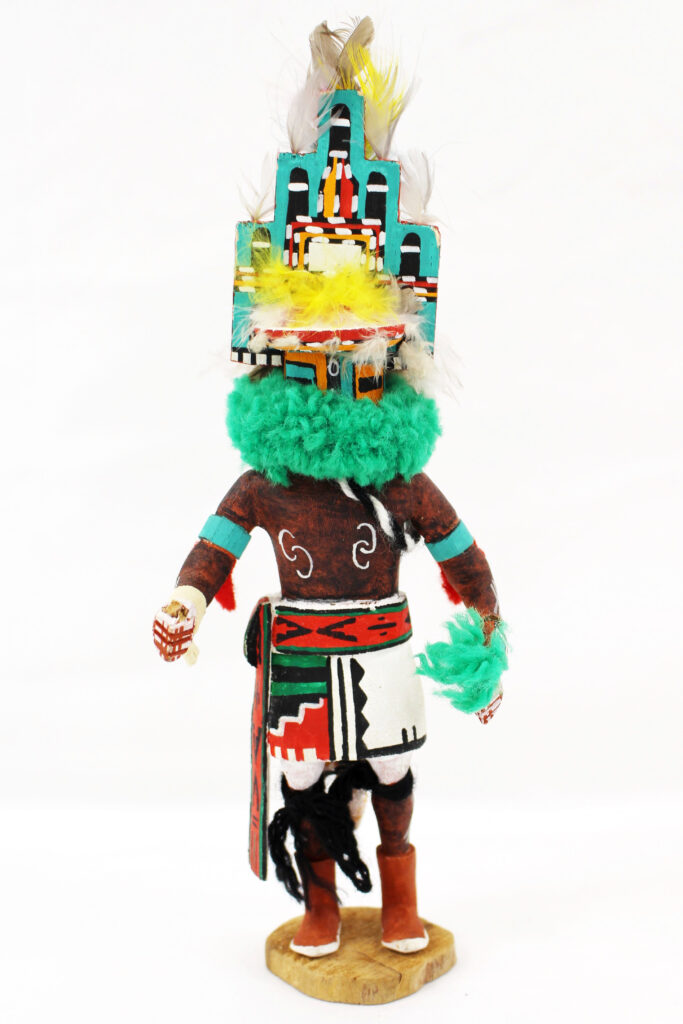
Home Dancer
1984.E.0237
Called Hemis by the Hopi. This figure was adopted from the Jemez people. His headdress, called a tableta, is painted with phallic symbols which represent abundance and fertility of crops. Feathers and sheaves of wheat attached to the headdress are believed to bring prosperity and hope. His rattle evokes the sound of rain and hope for plentiful rainfall. Symbols painted on the body represent friendship. This figure represents a job well done and a positive state of mind. He reminds the Hopi that hard work and dedication bring rewards, and to take time to enjoy the rewards of their labors.
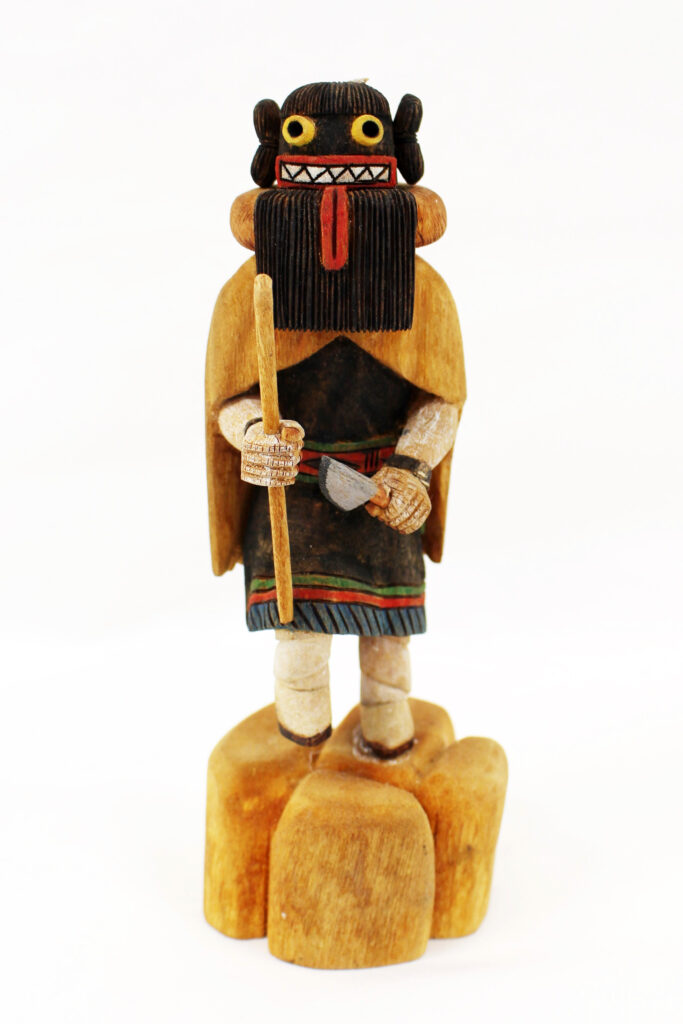
Ogre Woman
2006.01.E.1
Called Soyoko Mana by the Hopi. There are several ogre women figures. This figure is distinguished from other ogres because of her butterfly whorl hairstyle, which indicates she is not yet married. She carries a knife and crook and has a basket on her back. These items are used to catch her prey, children, and carry them away. Children are expected to provide food for her, and if they don’t, they are told she will eat them instead. This figure is a disciplinarian of children, teaching and frightening them into good behavior.
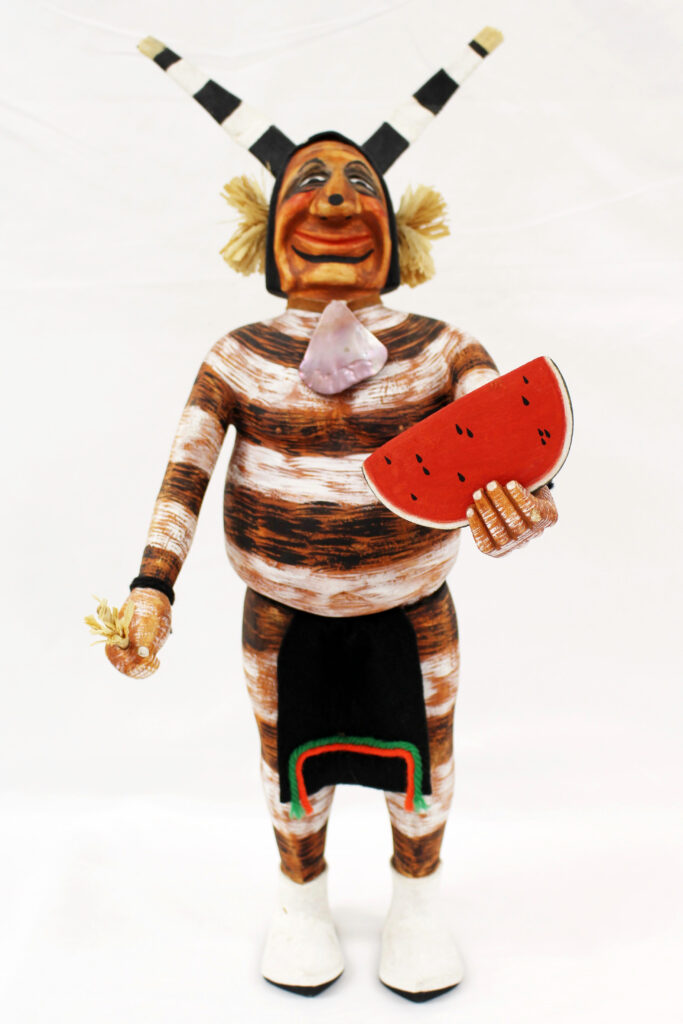
Clown
Walter Howato (1921-2003)
2012.11.E.6
Called Koshari, Koyala, Hano, or Tewa by the Hopi. They engage in loud, boisterous conversations and immoderate actions. They play tricks that disrupt and make a mess out of vital and fundamental rituals. They usually carry their favorite food, a watermelon and are portrayed as a glutton. This figure reminds people of acceptable standards of behavior within the Hopi community.
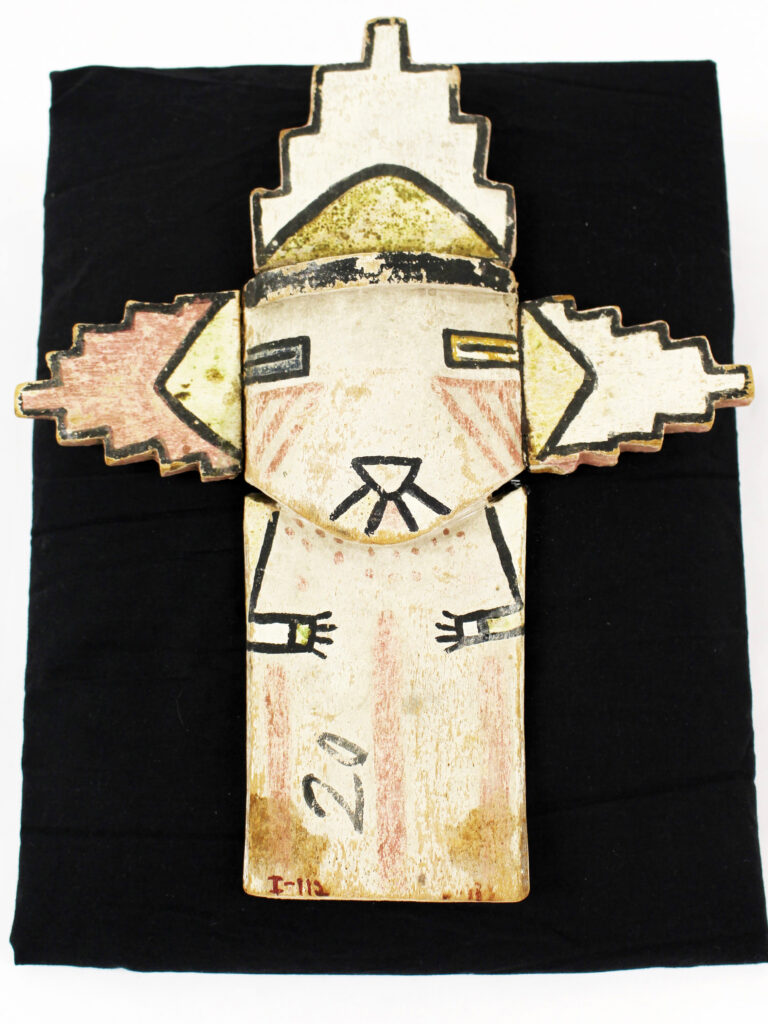
Cradle Kachina
1984.E.1082
Hopi girls receive cradle figures until they are around four years old. This type of figure is flat with the design usually only on one side because it is meant to hang on the wall. They are usually made by a girl’s father or uncle, but it is not uncommon for a husband and wife to work on a figure together. Carving is done by the husband, while painting and decorating is done by the wife. Cradle figures are meant to be educational tools rather than toys for Hopi girls. They teach them the Hopi beliefs and way of life.
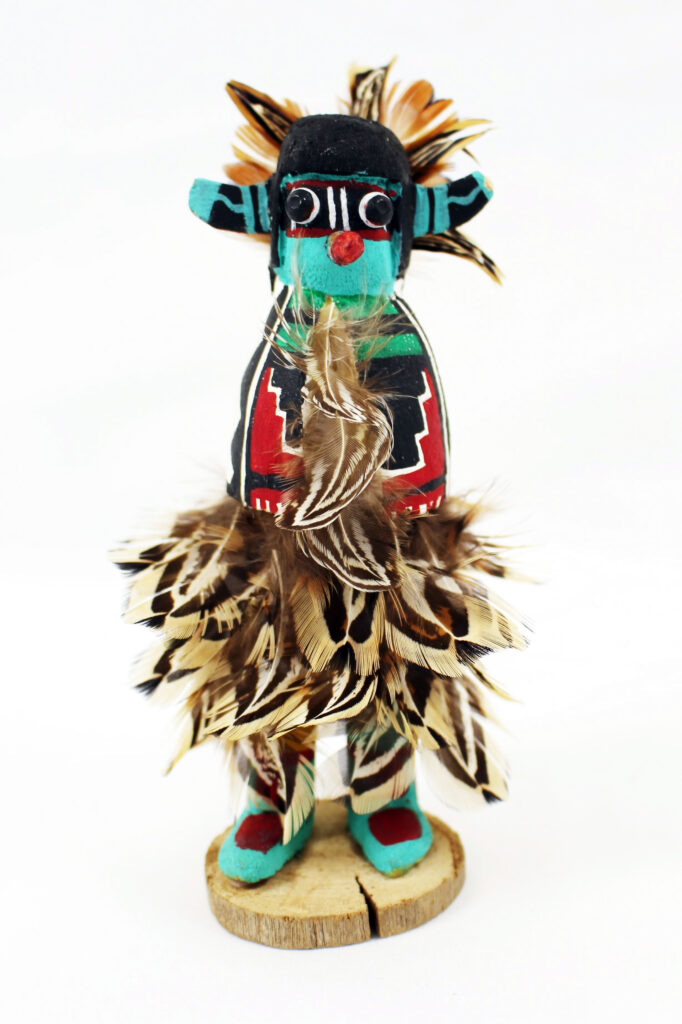
Kachina
1984.E.0236
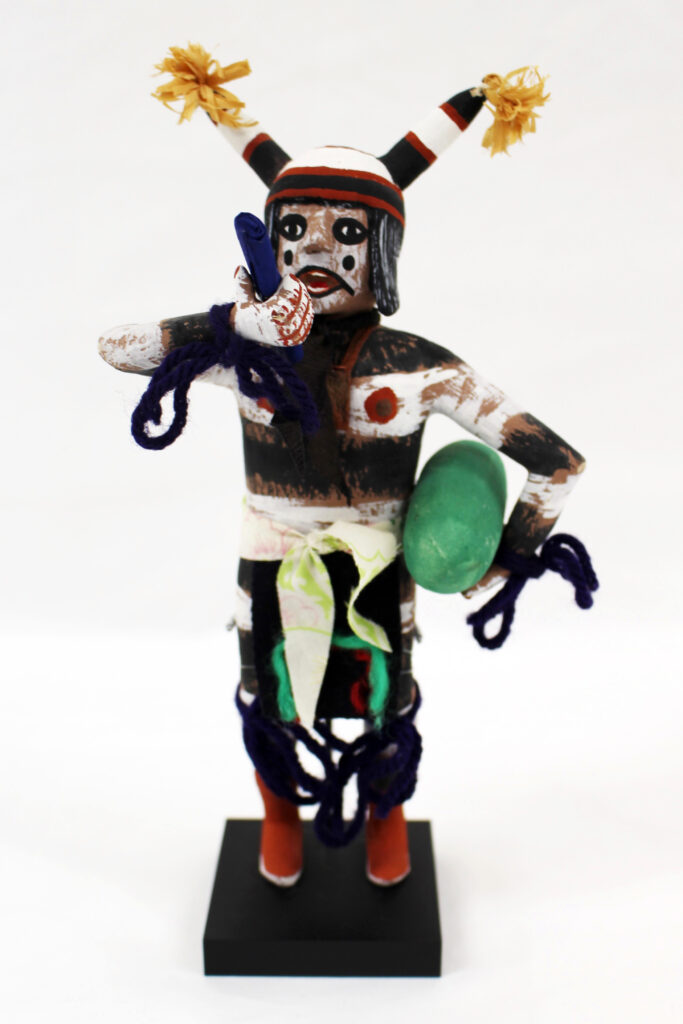
Clown
On loan from Mr. Frank Warfield
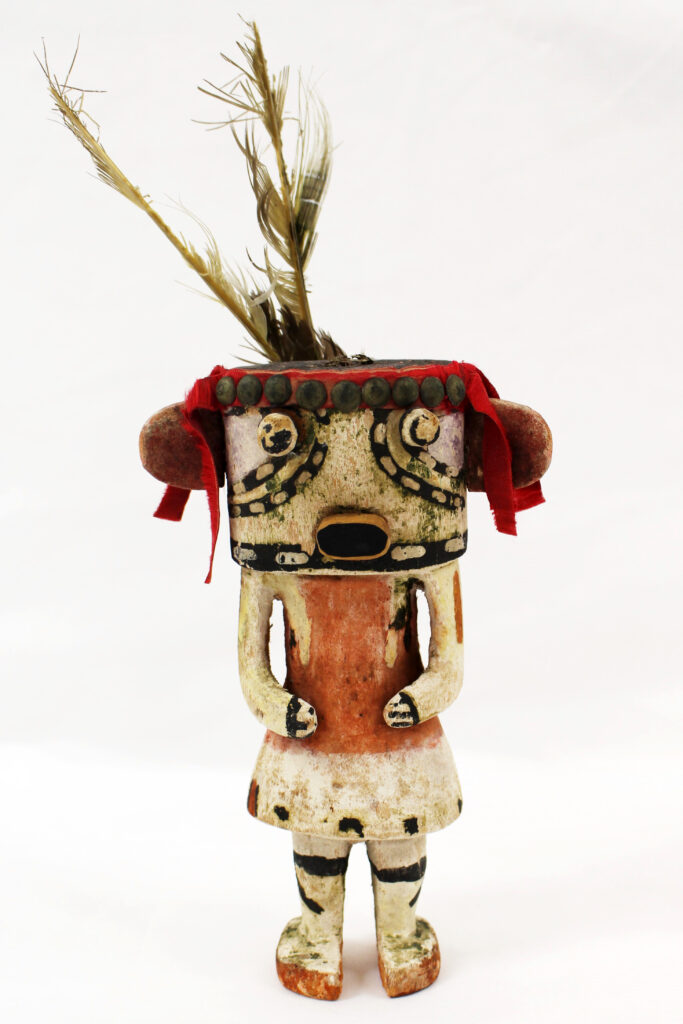
Old Style Kachina
1983.E.391
Artist Profile
Walter Howato (1921-2003) was born in the Sichomovi village on First Mesa and was a member of the Reed Clan. He began carving in the 1940s and actively carved for over sixty years until his death in 2003. Howato was part of a group of men that was responsible for the revival of “Old Style” figures. Howato said of his work that he wanted to make kachinas that looked like the “old” kachinas from his childhood. He did not enjoy making more contemporary style figures and he never created ceremonial figures. Howato carved the kachinas in the Lam Museum’s collection specifically for collector Roy Holubar.
Explore the other sections of this exhibit:
